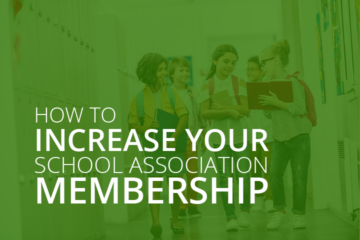3 Strategies to Create an Inspiring School Website
Picture this: You’re a parent looking for the right high school to enroll your child in. After searching for local schools, you find a website for an institution just a few miles away from your house. Enthusiastically, you open the website, only to find that the site is hard to navigate, all of the contact information is outdated, and the text is barely legible. As a result, you click off the site and move on to the next school.
Not only is this a poor experience for the parent, but the child could have also missed out on an amazing education simply due to poor web design.
Whether you’re an elementary school or university official, you know how important it is to have a strong digital presence for your institution. A website not only serves your existing students and parents by offering important resources and reminders, but can also help new families learn about your school and enroll their students.
To create a well-designed website guaranteed to enhance your digital visibility, use these important tips:
- Incorporate your school’s branding
- Use intuitive navigation
- Prioritize accessibility
To create a seamless experience with your school web design, do your research to find a school-specific CMS. A CMS, or website builder, can help your school easily add and arrange content on the front-end of your website without working on the technical backend, which often requires coding and years of technical know-how. With a strong foundation in the right technology, you can start incorporating more effective design strategies. Let’s get started.
Incorporate your school’s branding
What makes your school unique and differentiates it from other institutions? To add to your school’s sense of credibility online and give your website a professional appearance, incorporate branded elements so students and parents can be sure they’re on your school’s page. This web design best practice can help your website stand out from the crowd and attract prospective students and families.
Let’s take a closer look at these must-have branded features:
- Font. Across your website, use the same fonts to ensure consistency and readability. Many organizations use sans serif fonts, like Helvetica and Arial, for their clean look.
- Color scheme. Color can speak volumes about your school’s values and mission for its students. For example, if you work at a performing arts high school, consider incorporating red into your color palette because of its association with emotion and passion. Choose a few colors in your color scheme that compliment each other well and use them throughout your site.
- Visuals. High-quality images can help site visitors learn more about what your school has to offer and develop an emotional connection to your school. Include videos of your teachers leading insightful lessons in the classroom, pictures of your school’s sports teams, or even graphic designs promoting upcoming club events on campus.
- Messaging. Your messaging, which consists of what you say and how you say it, should be consistent on each page of your website. For instance, your school might want to adopt a formal tone to demonstrate that it cares deeply about academics. Or, you might want to adopt a casual tone to highlight your school’s fun extracurricular activities. Decide which language choice works best for your institution.
As you develop marketing materials, make sure these align with the branded elements on your website. This ensures that your brand, across both printed and digital materials, is consistent.
Use intuitive navigation
When users land on your website, you want to give them the best experience possible. This means that they should be able to find the information they’re looking for without having to dig around too much. They should also be able to freely explore your website without getting frustrated or running into any broken links or pages.
To prioritize simple navigation, use these key tips:
- Create a menu. A menu directs users to important web pages on your site, such as tuition information, enrollment forms, contact information, class syllabi, and other relevant pages you might create. If you have many important resources, consider creating a mega menu with the help of your CMS. A mega menu allows you to create dropdown lists with links to important resources organized into relevant sections.
- Use ample white space. If your website looks cluttered, users can easily get overwhelmed and find it difficult to read or interact with your content. Make sure to reasonably space each element apart from each other to facilitate a positive user experience.
- Add a search feature. An in-site search feature gives users the ability to directly type in what they’re looking for on your website. For instance, if a parent is looking for a PTA volunteer form, they should be able to easily type the name of the form in and get a direct link to this resource using the search function.
Your website should not only be easy to navigate on computers, but should also be accessible across mobile devices. A mobile-friendly website allows users to easily find important information from your school anywhere, at any time—as long as they have their phone in hand.
Plus, a mobile-optimized website can help lead to more donations for your school’s fundraisers. According to 360MatchPro’s fundraising statistics, mobile-friendly donation pages yield 34% more donations. Ensure that your school has a smooth online donation experience so mobile users can join in on your efforts to improve your students’ education.
Prioritize accessibility
Accessibility is an ongoing initiative to make the web more inclusive to everyone. Because you want all of your students and their families to be able to access your website, it’s vital that your site is user-friendly to people of all abilities.
Morweb’s guide to web accessibility recommends the following tips:
- Use alt text. Alt text, or alternative text, is a brief description that summarizes what an image is displaying. Using your CMS, add alt text to all of your images so individuals with visual disabilities and using screen readers can still engage with your content and have a full understanding of how it relates to the rest of your site.
- Add closed captioning and video transcripts. If you have video content on your website, use closed captioning that syncs with the audio playing. This allows people hard of hearing to actively follow along. Plus, provide complete transcripts as an additional resource.
- Incorporate sufficient color contrast. Your text should boldly stand out from the background. Ensure that there is sufficient color contrast between the background and foreground to increase readability.
For a complete list of web accessibility best practices, explore the Website Content Accessibility Guidelines (WCAG). These standards are updated regularly to help websites make their content more inclusive for all audiences. By following these guidelines, you’ll not only reach more diverse audiences, but also increase your ability to rank on search engines. Search engines like Google increase the visibility of accessible sites, allowing you to strengthen your digital presence.
A well-designed website is an important tool that every school should have. From providing easily accessible resources to students and their families to maximizing your fundraising efforts, a school website can help your institution improve its operations. Remember to look for a school-specific CMS to launch your website design today. Good luck!



